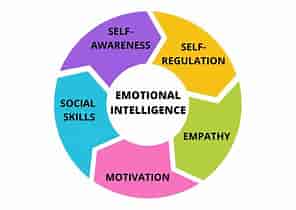Organizations around the globe are looking to improve their leadership style, but it can be challenging to find the right one. Choosing the right leadership style for your team is the best way to challenge old practices, mitigate risks, scale your organization, and communicate effectively. That’s where strategic leadership comes in.
Definition of the strategic leadership style
Strategic leadership is a leader’s ability to visualize, plan, lead, and make the best out of the resources they have to execute strategies efficiently and successfully. Strategic leaders marry their strategic plan to their strategic management. Their organization respects their leadership role and overall vision while working to bring that vision to life. Productivity and management mindset play major roles — how leaders think equals how they lead. A strategic mindset reflects something I call strategic agility: the ability to see how the big picture relates to the here and now.
Key skills a strategic leader must have

The top 10 skills a strategic leader must have are:
1. Strategic thinking
A strategic leader must first be a visionary and a strategic thinker. They think with the end in mind, and they only focus on necessary tasks.
2. Communication skills
Being able to communicate the vision of where the organization should be heading is vital. Strategic leaders must have the social skills necessary to communicate their vision with the team accurately.
3. Strategic planning
Since organizations rely on systems to save time, money, and resources, understanding how to create systems for planned initiatives is crucial.
4. Measuring objectives and key results (OKRs)
Strategic leaders must be able to create a goal-setting framework that defines and tracks their objectives and outcomes.
5. Strategic agility
Being able to turn the organization’s long-term vision into daily objectives is an integral part of strategic leadership. Strategic leaders must have a wide perspective to be able to apply an overall vision to the here and now.
6. Awareness
Strategic leaders understand how their actions and moods impact their teams. They think before acting, have emotional intelligence, and can control distracting or negative moods.
7. Trust and reliability
You can count on strategic leaders. They go after their goals with passion and determination, and they stop at nothing until their vision turns into reality.
8. Execution
Strategic leaders are masters at strategy implementation. They understand how to turn goals into action and action into results. They make the most out of their systems and resources.
9. Integrity
Being grounded in integrity and compassion is an essential part of strategic leadership. Strategic leaders must be able to consider their team’s ideas, feelings, and perspectives before making decisions.
10. Management
Strategic leaders understand how to lead a team. They know how to allocate resources, delegate responsibilities, and empower their subordinates to make decisions on their behalf.
Relevant figures with strategic leadership characteristics
Prominent leaders have shown us what success looks like when vision becomes an executed reality.
Here are three popular figures who have wowed us with their strategic leadership styles.
Katrín Jakobsdóttir
In November 2017, 41-year-old Katrín Jakobsdóttir was the second woman in the history of Iceland to be elected prime minister.
Jakobsdóttir is known for several strategic initiatives, but one of her most successful was taking preventative measures against COVID-19. As a result, Iceland faced the pandemic with very few casualties and are on their way to eliminating the virus completely. Jakobsdóttir is also the chairperson of the Left-Green Movement in Iceland and holds a strategic position as Chair of the Council of Women World Leaders. Her strategic vision for the future is fulfilling the Paris Agreement targets for 2030, which will put them on track to be carbon neutral by 2040.
Jacinda Ardern
Jacinda Ardern secured a historic election victory for prime minister in New Zealand when her party won the highest percentage of votes in more than five decades. Just like Jakobsdóttir, Ardern acted swiftly to tackle the COVID-19 crisis. As a result, she was able to keep casualties to a minimum. Ardern is the first head of government to give birth in office since Pakistan’s former prime minister. She is also the first world leader to go on maternity leave in office. She’s known for remaining consistent and direct about her leadership strategy. Within 36 hours of a terrorist attack that killed 50 people in Christchurch in 2019, Ardern reached out to politicians to tighten up gun laws.
A few days later, she announced immediate changes to ban assault rifles and military-style semi-automatics. She also offered emotional and financial support to families who lost loved ones, and did so in their native languages.
Jeff Bezos
Jeff Bezos, the founder and CEO of Amazon, has brought his company’s stock up 225,233% and the company’s market cap up to $1.7 trillion. What’s Bezos’s business strategy? Thinking long-term. Nearly two decades ago, in his 1997 letter to shareholders, Bezos said, “we believe that a fundamental measure of our success will be the shareholder value we create over the long term.”
Bezos’s strategy is focusing on things that don’t change and refusing to focus on short-term gains. Bezos also emphasizes the importance of intuition, research, and deep knowledge of the market — especially the trends that drive it.

In this section, we’ll go over the potential pros and cons of strategic leadership.
Strategic leadership pros
- Vision: When organizations have a vision they’re aiming toward, they’re able to set short-term goals that help them reach long-term goals.
- Strategic systems: Organizations can save time, money, and resources when they create frameworks and systems to support strategic change.
- Encourages unity: Effective leadership encourages unity and interdepartmental collaboration. Strategic leaders value team members’ opinions and input.
- Clarity: When strategic leaders clearly communicate how tasks relate to overall goals, it’s easier for team members to understand why their work is meaningful.
Strategic leadership cons
- Lack of flexibility: When strategic plans are implemented company-wide, it can be difficult for strategic leaders to change their framework if something needs to be altered.
- Difficulty predicting the future: Predicting the future plays a major role in how strategic leaders operate, but it’s not always possible to predict the future accurately.
- Can be expensive: Successful strategic plans can increase profits and overall business success. But if a plan doesn’t work, it could result in losing departments, layoffs, or canceled projects.
- Stalled growth: If strategic leaders are too conservative or too liberal about taking risks, it can stunt the organization’s growth or prevent the organization from seeing problems that were on the rise.
- Lack of presence: If strategic leaders struggle with finding the balance between looking toward the future and addressing the here and now, it can keep them from addressing current problems in the organization.
Note: it’s important to keep in mind that not every pro and con will apply to every organization. Every strategic leader is different, and some are more effective than others.
Examples of strategic leadership situations
Here are two real-life situations that demonstrate strategic leadership:
Toyota
Knowing that the US car industry was more advanced and efficient than their Japanese one, Toyota’s strategy involved studying its competitors to copy their best practices. After years of studying American car makers’ production lines (like Ford), Toyota blended American processes with their own to create something even better. Toyota’s strategy includes knowing its weaknesses, focusing on efficiency, and cultivating high-quality design and innovation.
PayPal
Instead of just becoming another bank, PayPal used unconventional strategies to grow its empire. PayPal adopted strategies like holding undisbursed funds in commercial interest-bearing checking accounts instead of engaging in fractional-reserve banking, and spending less money on technology (even though its technology platform is better than banks’). Paypal also refuses to partner directly with banks. Instead, it focuses on building partnerships with merchants, being quicker to market than other payment innovation companies, and building trust with consumers.
How to become a strategic leader

Here are my top five tips on becoming a strategic leader.
1. Balance the present with the future
To become a strategic leader, it’s vital to balance the day-to-day with future plans. Host weekly meetings with team members and departments, and/or ask employees to record daily or weekly issues in a shared system so you can stay up-to-date with any issues related to the strategic plan.
2. Challenge the status-quo
Instead of conducting business as usual, challenge old practices, create better processes and solutions, and motivate your team to do the same.
3. Have a risk management plan
With strategic plans come possible risks. That’s why it’s vital to always create a risk management plan. It’s also important to establish boundaries (like initiating a fixed budget) to help you prevent negative outcomes before they start.
4. Communicate effectively
Strategic plans work best when everyone’s on board. It’s crucial to be clear and get everyone on the same page. Effective communication creates powerful teams that not only support strategic initiatives but also propel initiatives forward faster.
5. Establish a planning committee
Nobody understands the inner workings of an organization like frontline staff, mid-level managers, and senior leaders. Creating a planning team can help strategic leaders better understand company culture, stakeholders, and challenges. Strategic leadership vs. other leadership styles. Let’s examine how strategic leadership compares to other leadership styles:
Democratic leadership style
Democratic leaders make decisions based on each team member’s input. Although the leader makes the final call, decisions are often made collectively. For example, the democratic leader may open a discussion about a few decision-related options. After discussing the options, the leader may open the decision to a vote or consider their team’s feedback before formulating the final decision.
How does strategic leadership compare?
Like democratic leaders, strategic leaders recognize that everyone has to buy in to ensure the strategic plan’s success. Under strategic leadership, the leader communicates the organization’s strategic vision and influences others to adopt the vision.
Autocratic leadership style
Autocratic leaders are the exact opposite of democratic leaders. The leader makes all of the decisions without input from anyone who reports to them. The leader doesn’t consider team members’ opinions before giving direction. Team members are expected to obey decisions at a time and pace specified by the leader. This leadership style is rarely effective or sustainable long-term but it can be good for dealing with crisis situations.
How does strategic leadership compare?
Strategic leaders typically adhere to a strict vision for the company, but team member input is still valued — as long as team members are open to new ideas and challenging the status quo.
Servant leadership style
Servant leaders, also called laissez-faire leaders, give nearly all authority to their team members. This could mean having no major company policies around deadlines and processes, or it could mean putting their full trust into team members as they focus on big-picture items (like running the company).
How does strategic leadership compare?
Strategic leaders trust their team and value objective thinking, but not if it risks company growth or the strategic vision.
Why strategic leadership might be better
The best leadership style ultimately depends on the organization, but strategic leadership might be better because strategic leaders:
- Are open to new ideas as long they support the overall vision
- Make calculated decisions
- Know how to prevent and mitigate risks
- Are constantly looking for ways to improve
- Encourage objective thinking that supports the overall vision
- Support unity
- Build commitment
- Ensure clarity around tasks and objectives
In other words, strategic leaders have the best balance and combination of the other three leadership styles, plus a few other tricks up their sleeve.





Leave a Reply